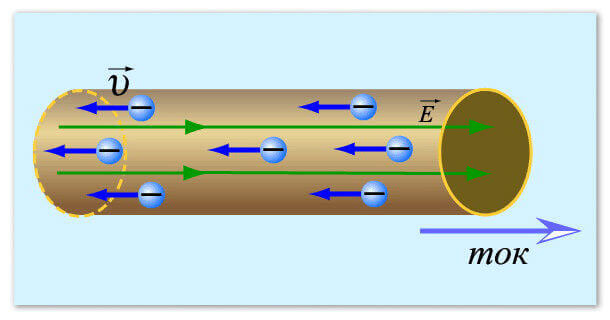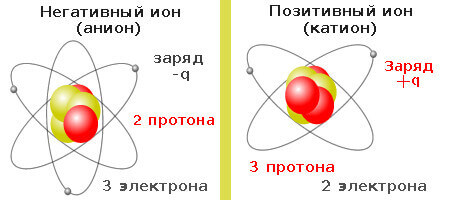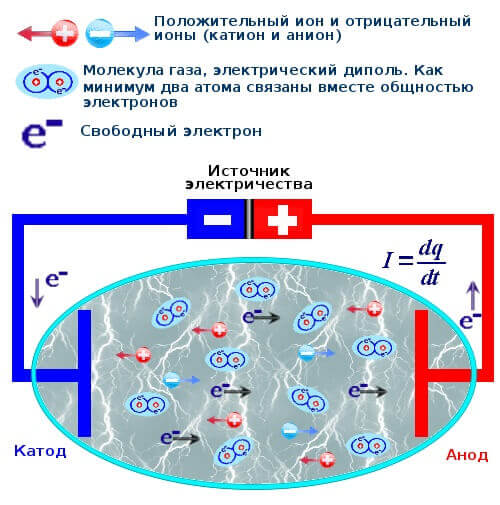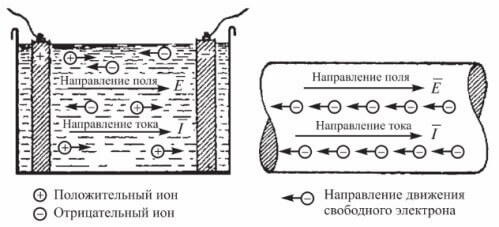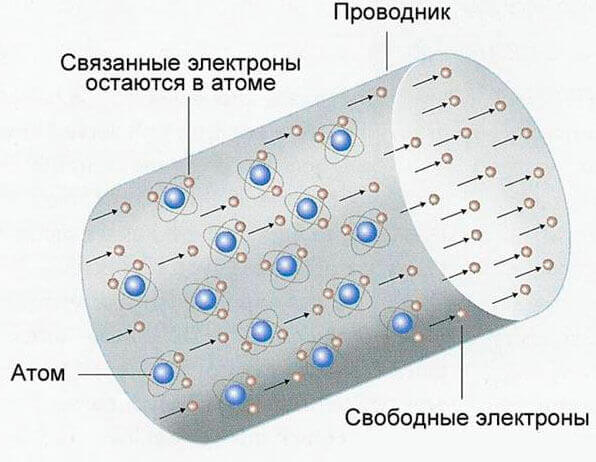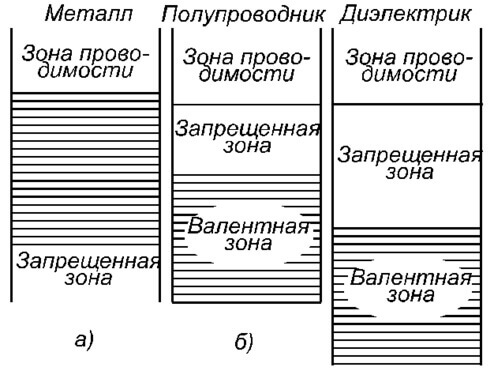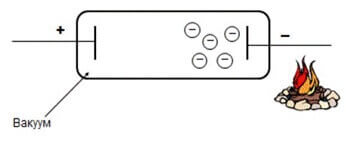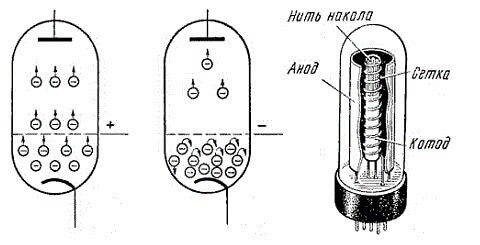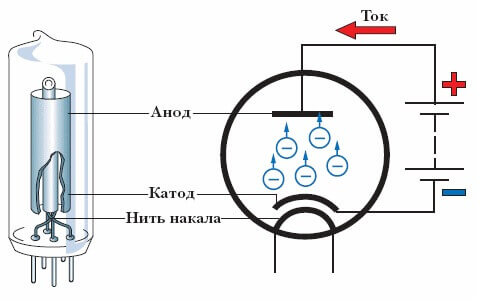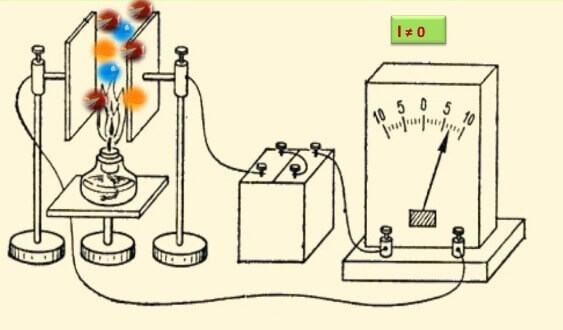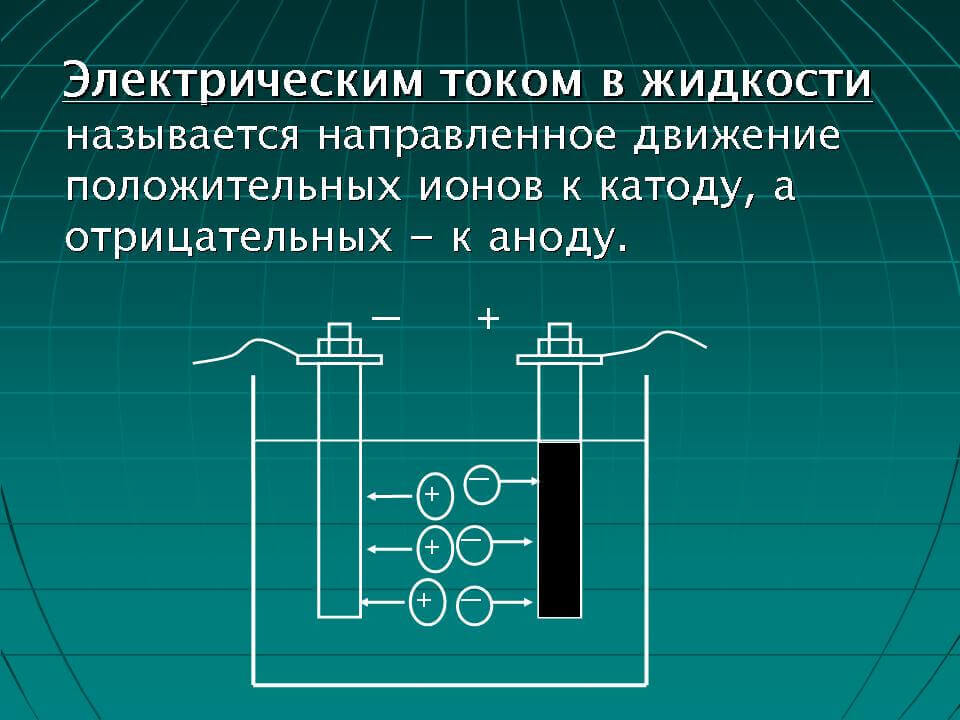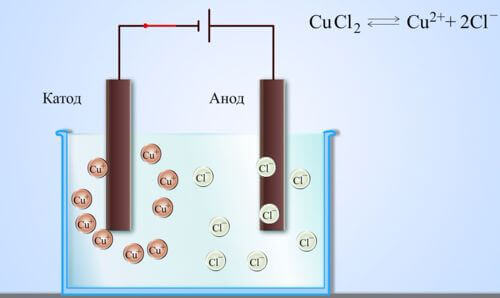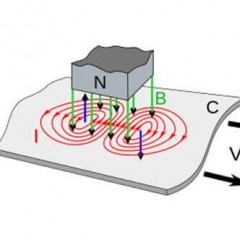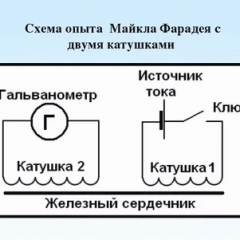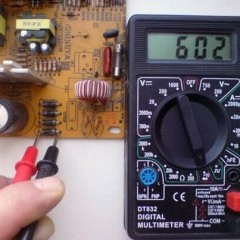What is electric current and what are the conditions of its existence
Definition
An electric current is the directional movement of charge carriers - this is the standard formulation from a physics textbook. In turn, certain particles of a substance are called charge carriers. They can be:
- Electrons are negative charge carriers.
- Ions are positive charge carriers.
But where do charge carriers come from? To answer this question, you need to recall basic knowledge about the structure of matter. All that surrounds us is matter, it consists of molecules, its smallest particles. Molecules are made up of atoms. An atom consists of a nucleus around which electrons move in given orbits. Molecules also randomly move. The movement and structure of each of these particles depend on the substance itself and the influence of the environment on it, such as temperature, voltage, and so on.
An ion is an atom in which the ratio of electrons to protons has changed. If the atom is initially neutral, then the ions in turn are divided into:
- Anions are the positive ion of an atom that has lost electrons.
- Cations are an atom with "extra" electrons attached to the atom.
Current unit - Amp, according to Ohm's law It is calculated by the formula:
I = U / R,
where U is the voltage, [V], and R is the resistance, [Ohm].
Or is directly proportional to the amount of charge transferred per unit of time:
I = Q / t,
where Q is the charge, [C], t is time, [s].
Conditions for the existence of electric current
What is the electric current, we figured out, now let's talk about how to ensure its flow. For electric current to flow, two conditions must be met:
- The presence of free charge carriers.
- Electric field.
The first condition for the existence and flow of electricity depends on the substance in which the current flows (or does not flow), as well as its state. The second condition is also satisfied: for the existence of an electric field, it is necessary to have different potentials, between which there is a medium in which charge carriers will flow.
Recall:Voltage, EMF is the potential difference. It follows that to fulfill the conditions for the existence of current - the presence of an electric field and electric current, voltage is needed. These can be plates of a charged capacitor, a galvanic cell, an emf that has arisen under the influence of a magnetic field (generator).
How it arises, we figured out, let's talk about where it is directed.The current, mainly in our usual use, moves in conductors (electrical wiring in an apartment, incandescent bulbs) or in semiconductors (LEDs, your smartphone’s processor and other electronics), less often in gases (fluorescent lamps).
So, in most cases, the main charge carriers are electrons, they move from the minus (the point with negative potential) to the plus (the point with positive potential, you will learn more about this below).
But an interesting fact is that the direction of the current was taken to be the movement of positive charges - from plus to minus. Although in fact, everything happens the other way around. The fact is that the decision about the direction of the current was made before studying its nature, as well as before it was determined by what the current flows and exists.
Electric current in different environments
We have already mentioned that in different environments the electric current can differ in the type of charge carriers. Media can be divided by the nature of conductivity (in decreasing conductivity):
- Conductor (metals).
- Semiconductor (silicon, germanium, galium arsenide, etc.).
- Dielectric (vacuum, air, distilled water).
In metals
In metals there are free charge carriers, they are sometimes called "electric gas". Where do free charge carriers come from? The fact is that metal, like any substance, consists of atoms. Atoms, one way or another, move or oscillate. The higher the temperature of the metal, the stronger this movement. At the same time, the atoms themselves in general form remain in their places, actually forming the metal structure.
In the electron shells of an atom, there are usually several electrons in which the bond with the nucleus is rather weak. Under the influence of temperatures, chemical reactions and the interaction of impurities, which in any case are in the metal, the electrons break away from their atoms, positively charged ions are formed. The detached electrons are called free and move randomly.
If they are affected by an electric field, for example, if you connect a battery to a piece of metal, the random movement of electrons will become ordered. Electrons from the point at which the negative potential is connected (the cathode of a galvanic cell, for example) will begin to move to the point with a positive potential.
In semiconductors
Semiconductors are materials in which in the normal state there are no free charge carriers. They are in the so-called forbidden zone. But if external forces, such as an electric field, heat, various radiation (light, radiation, etc.) are applied, they overcome the forbidden zone and pass into the free zone or conduction zone. Electrons break away from their atoms and become free, forming ions - positive charge carriers.
Positive carriers in semiconductors are called holes.
If you simply transfer energy to a semiconductor, for example, heat it, chaotic motion of charge carriers will begin. But if we are talking about semiconductor elements, such as a diode or a transistor, then at the opposite ends of the crystal (a metallized layer is deposited on them and the conclusions are soldered), an EMF will arise, but this does not apply to the topic of today's article.
If you attach the emf source to the semiconductor, then the charge carriers will also go into the conduction band, and their directional movement will begin - the holes will go to the side with a lower electric potential, and the electrons - to the side with a larger one.
In vacuum and gas
Vacuum is a medium with a complete (ideal case) absence of gases or its quantity minimized (in reality). Since there is no substance in a vacuum, there is no where to take charge carriers from. However, the flow of current in a vacuum laid the foundation for electronics and a whole era of electronic elements - electric vacuum tubes.They were used in the first half of the last century, and in the 50s they began to gradually give way to transistors (depending on the specific field of electronics).
Suppose that we have a vessel from which all gas is pumped out, i.e. it has a complete vacuum. Two electrodes are placed in the vessel, let's call them the anode and cathode. If we connect the negative potential of the emf source to the cathode, and the positive potential to the anode, nothing will happen and the current will not flow. But if we start heating the cathode, the current will begin to flow. This process is called thermionic emission - the emission of electrons from a heated surface of an electron.
The figure shows the process of current flow in a vacuum lamp. In vacuum tubes, the cathode is heated by a nearby filament in rice (H), such as in a light bulb.
Moreover, if you change the polarity of the power supply - apply a minus to the anode, and apply a plus to the cathode - the current will not flow. This will prove that the current in vacuum flows due to the movement of electrons from the CATHODE to the ANODE.
A gas, like any substance, consists of molecules and atoms, which means that if the gas is under the influence of an electric field, then at a certain strength (ionization voltage) the electrons break away from the atom, then both conditions of the flow of electric current are satisfied - the field and free media.
As already mentioned, this process is called ionization. It can occur not only from the applied voltage, but also during gas heating, x-ray radiation, under the influence of ultraviolet radiation and other things.
Current will flow through the air even if a burner is installed between the electrodes.
The flow of current in inert gases is accompanied by gas luminescence, this phenomenon is actively used in fluorescent lamps. The flow of electric current in a gaseous medium is called a gas discharge.
In fluid
Suppose we have a vessel with water in which two electrodes are placed, to which a power source is connected. If the water is distilled, that is, pure and does not contain impurities, then it is a dielectric. But if we add a little salt, sulfuric acid or any other substance to the water, an electrolyte will form and a current will begin to flow through it.
An electrolyte is a substance that conducts an electric current due to dissociation into ions.
If copper sulfate is added to the water, then a copper layer will settle on one of the electrodes (cathode) - this is called electrolysis, which proves that the electric current in the liquid is due to the movement of ions - positive and negative charge carriers.
Electrolysis is a physicochemical process that involves the separation of components that make up an electrolyte on electrodes.
Thus, copper plating, gilding and coating with other metals.
Conclusion
To summarize, for the flow of electric current we need free charge carriers:
- electrons in conductors (metals) and vacuum;
- electrons and holes in semiconductors;
- ions (anions and cations) in liquids and gases.
In order for the movement of these carriers to become ordered, an electric field is needed. In simple words - apply voltage at the ends of the body or install two electrodes in a medium where an electric current is supposed to flow.
It is also worth noting that the current in a certain way affects the substance, there are three types of exposure:
- thermal;
- chemical;
- physical.
In the end, we recommend watching a useful video in which the conditions for the existence and flow of electric current are examined in more detail:
Useful on the topic:

